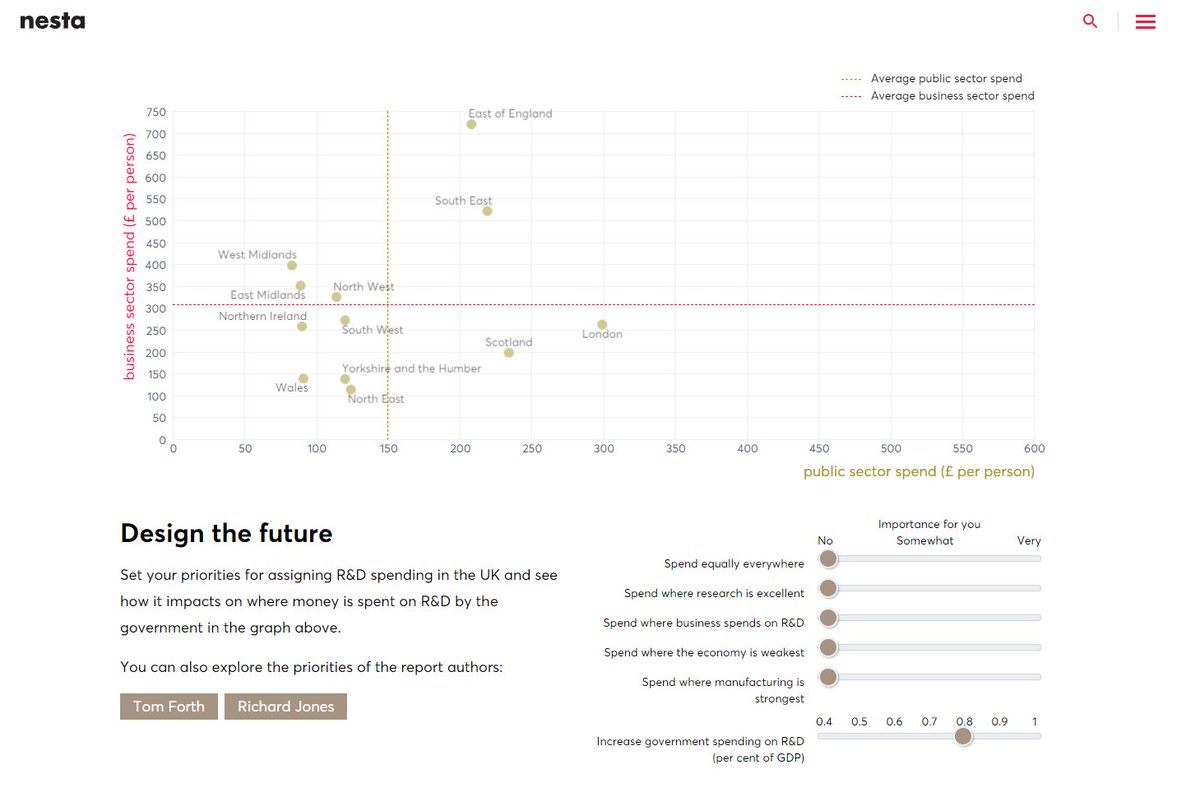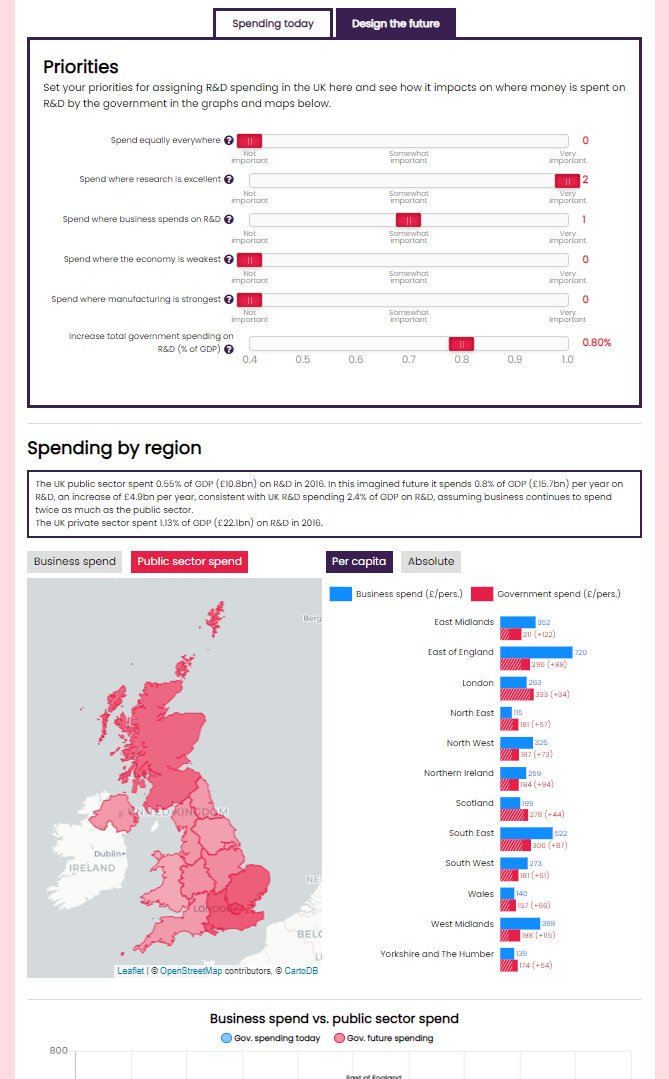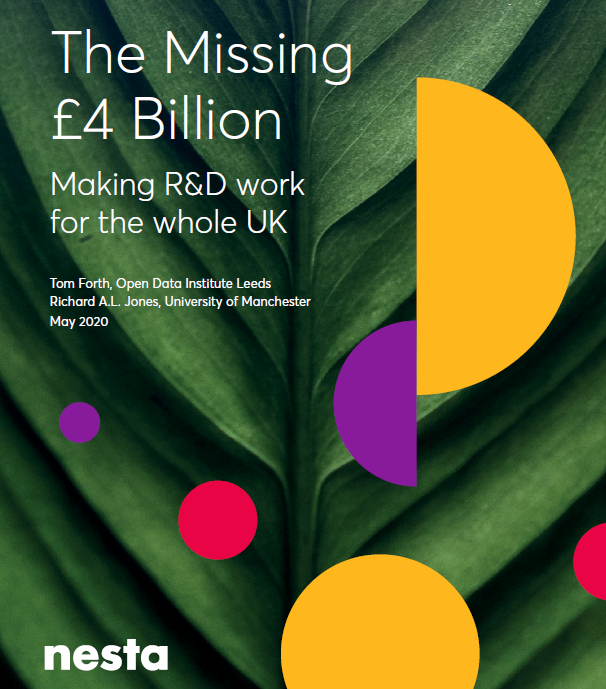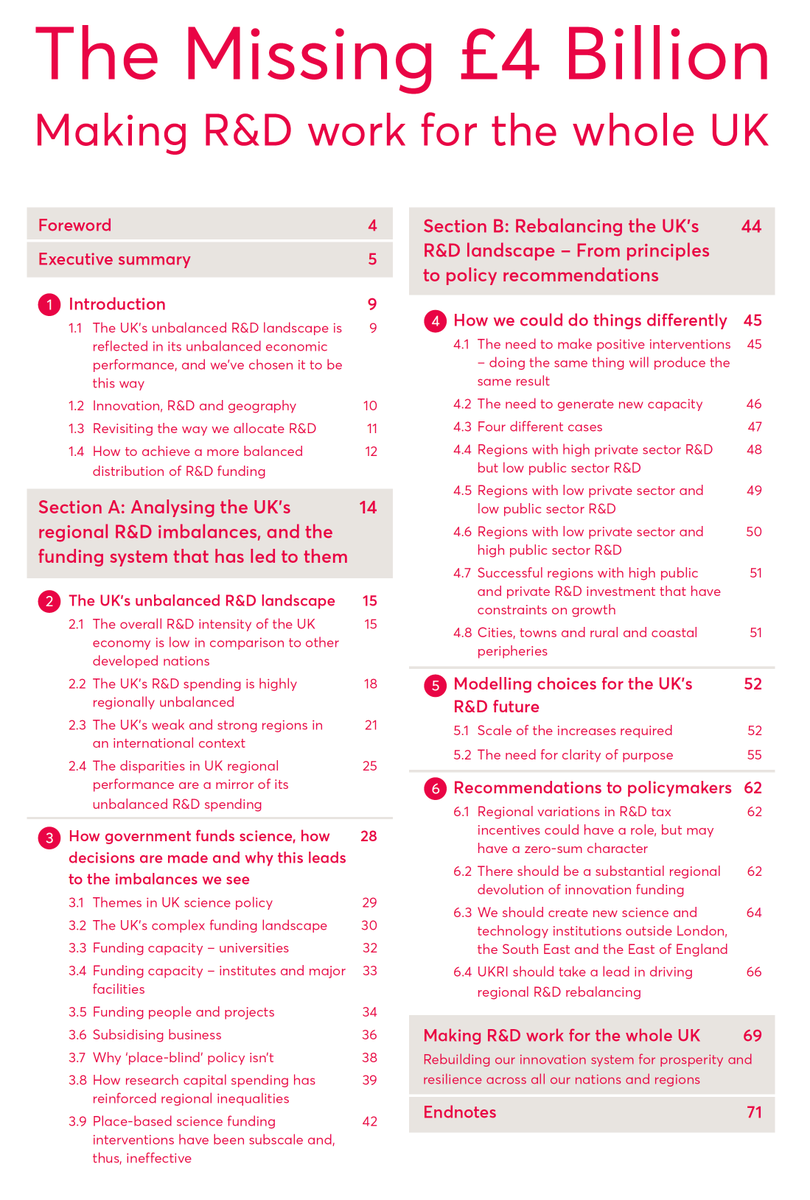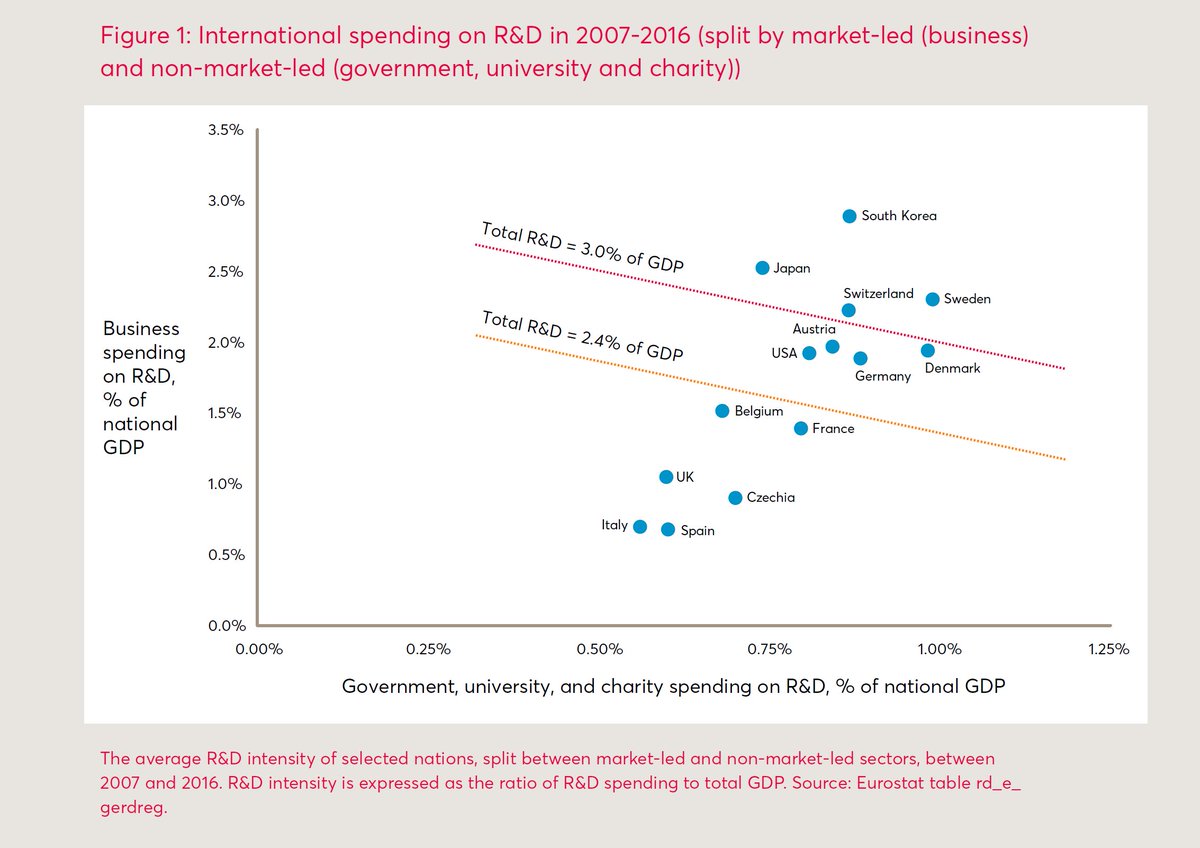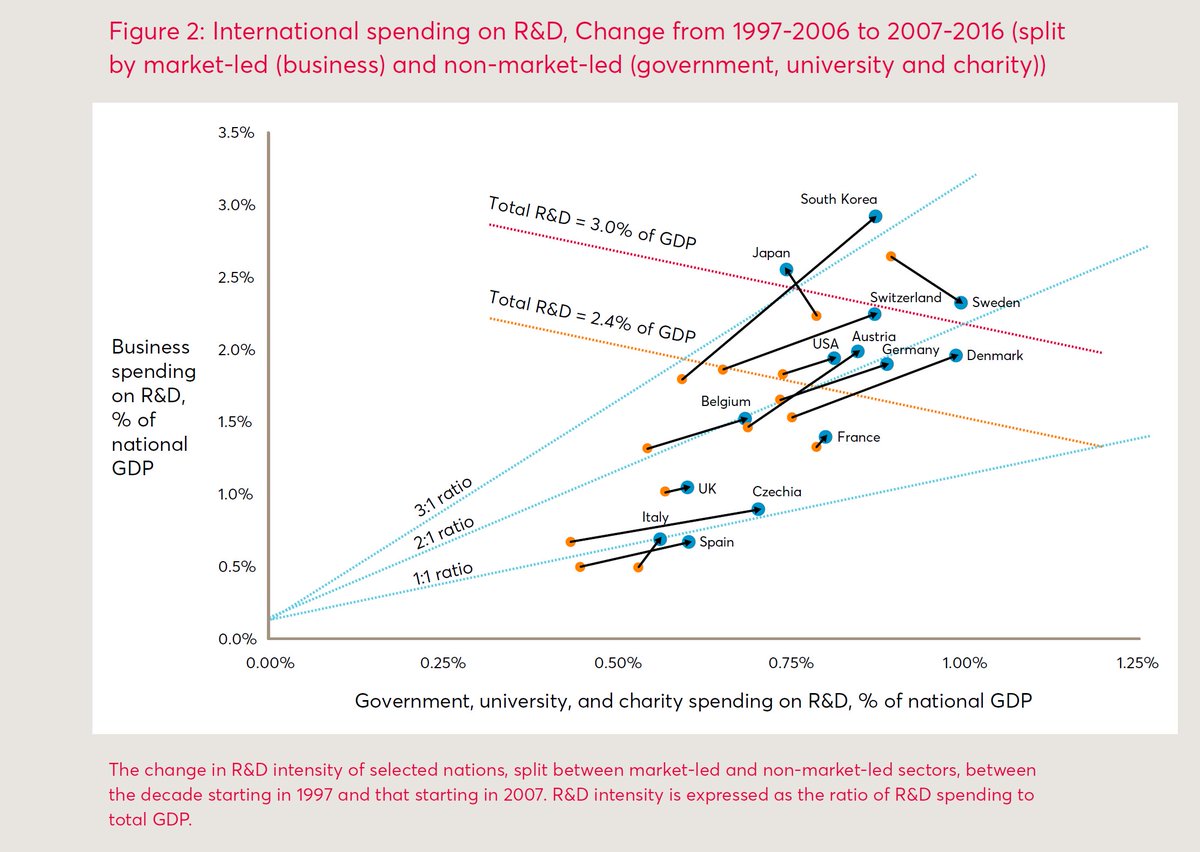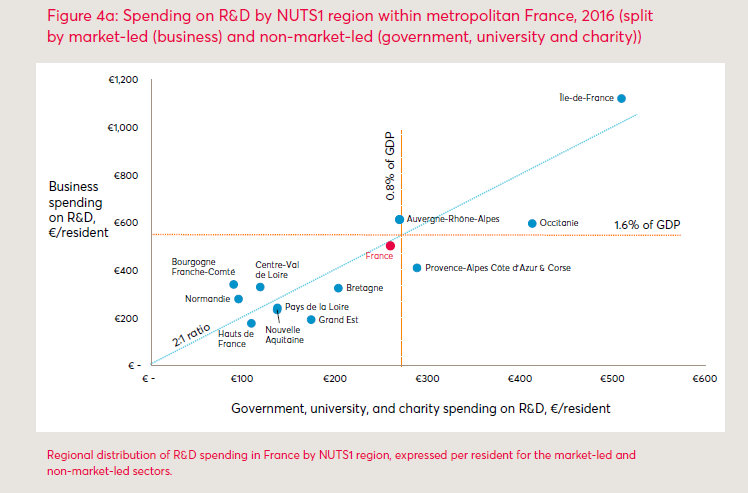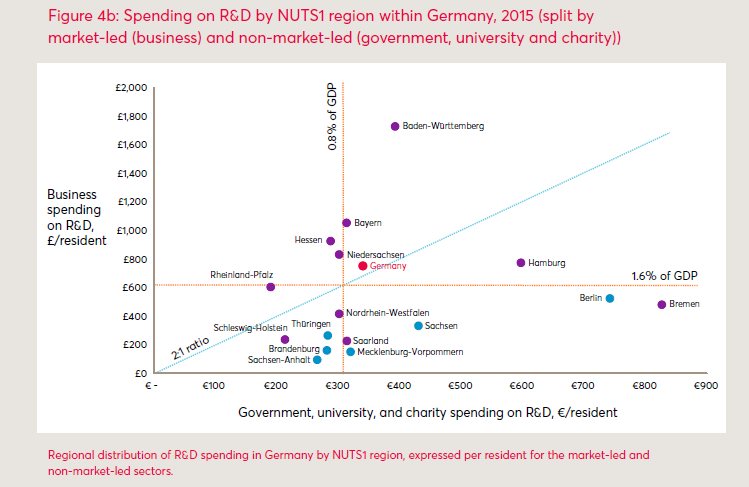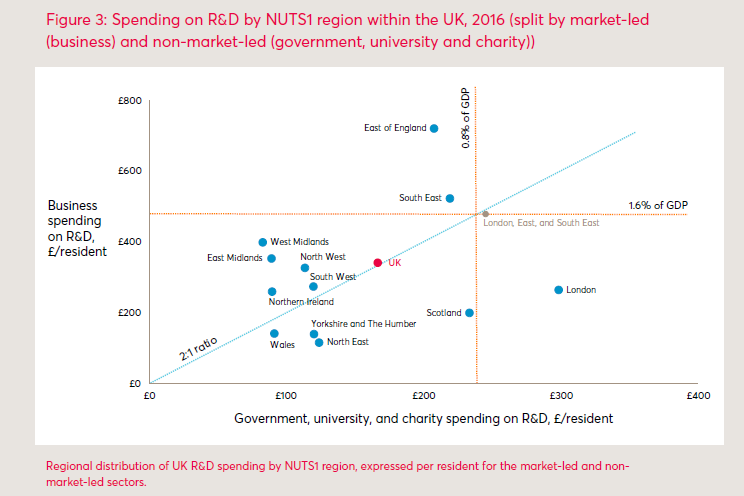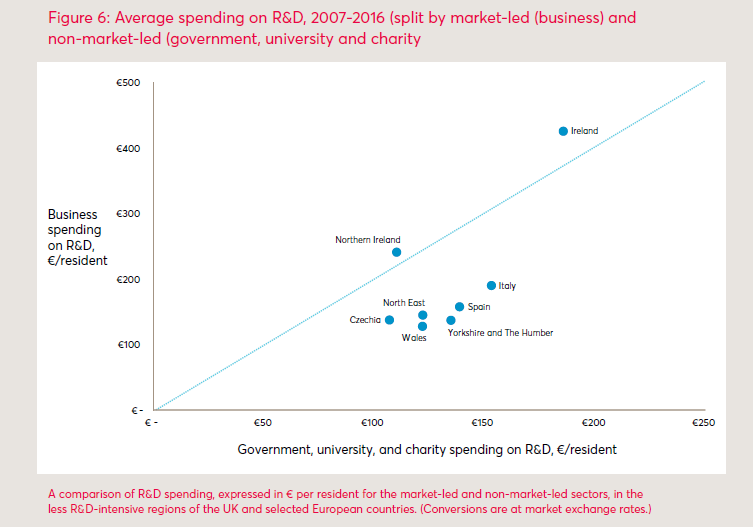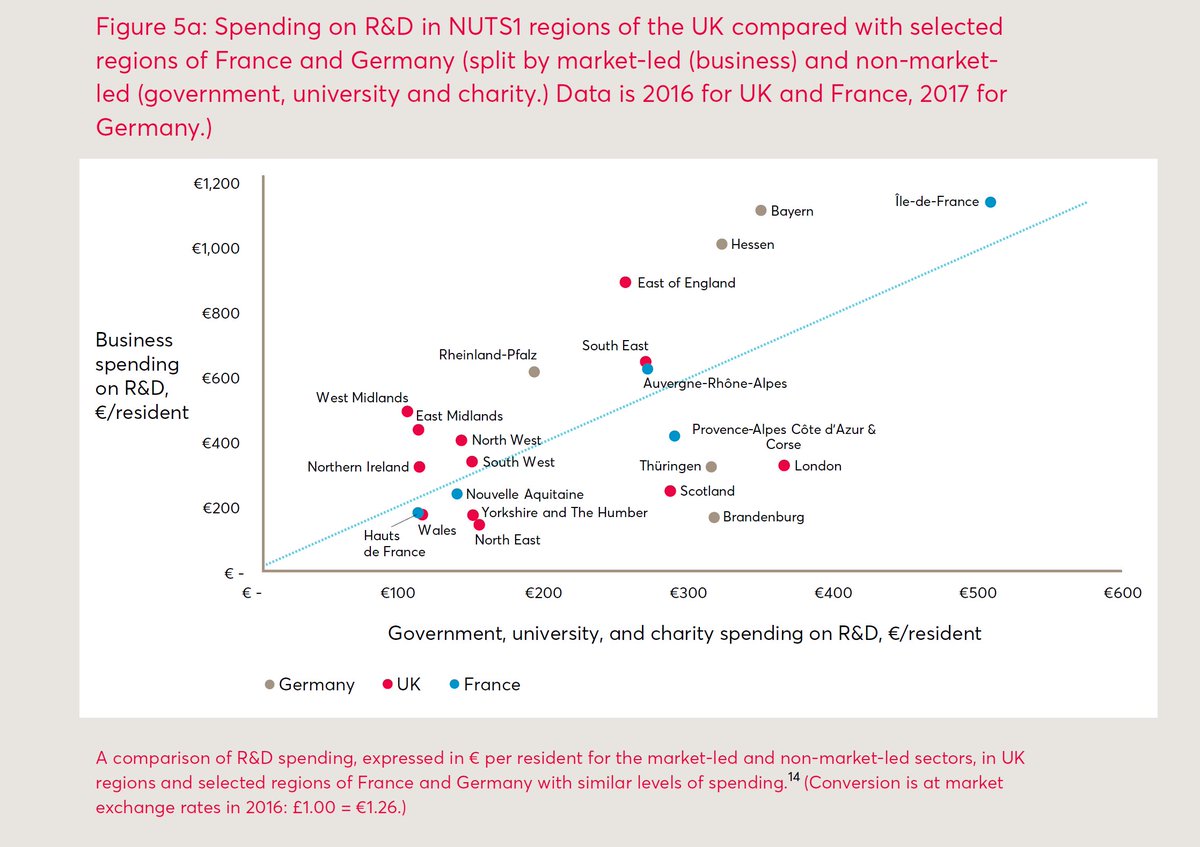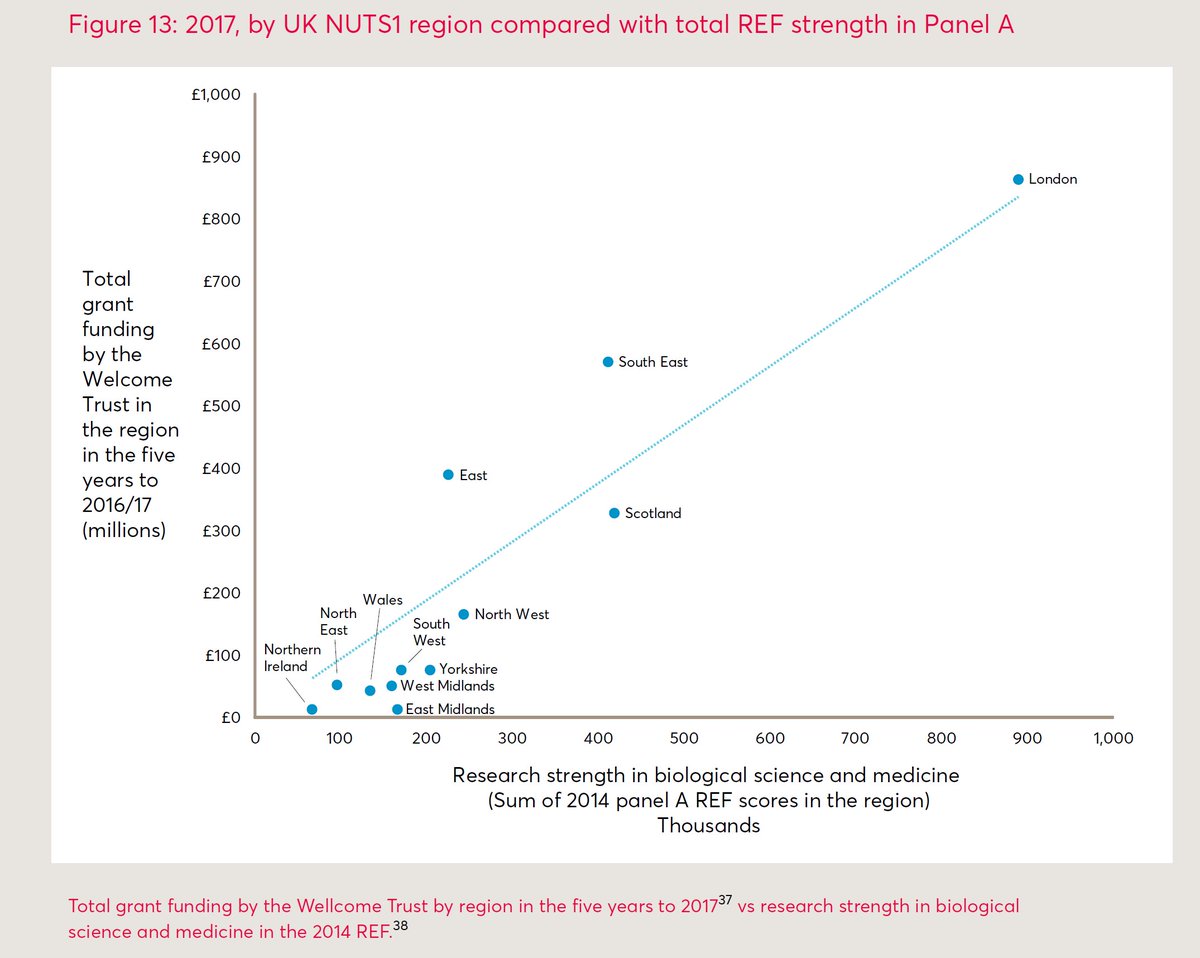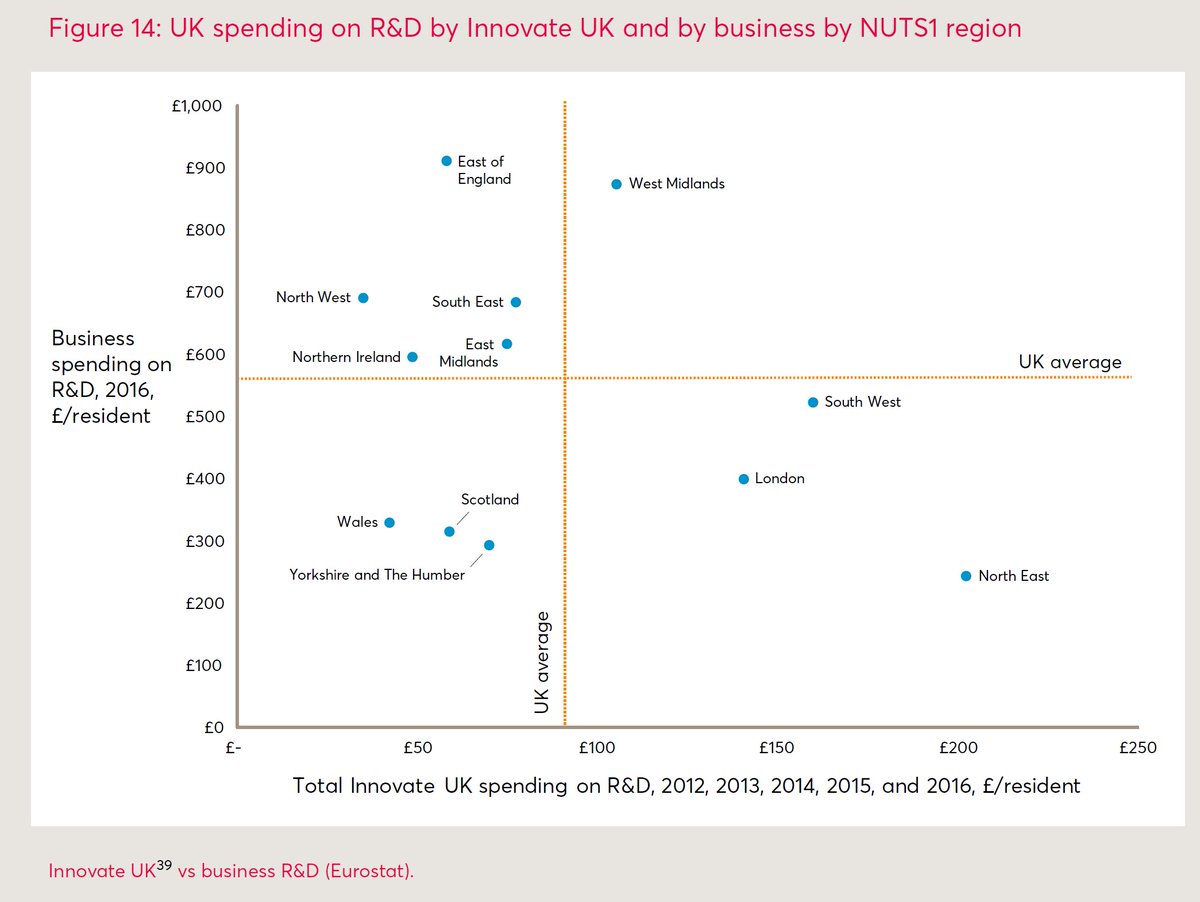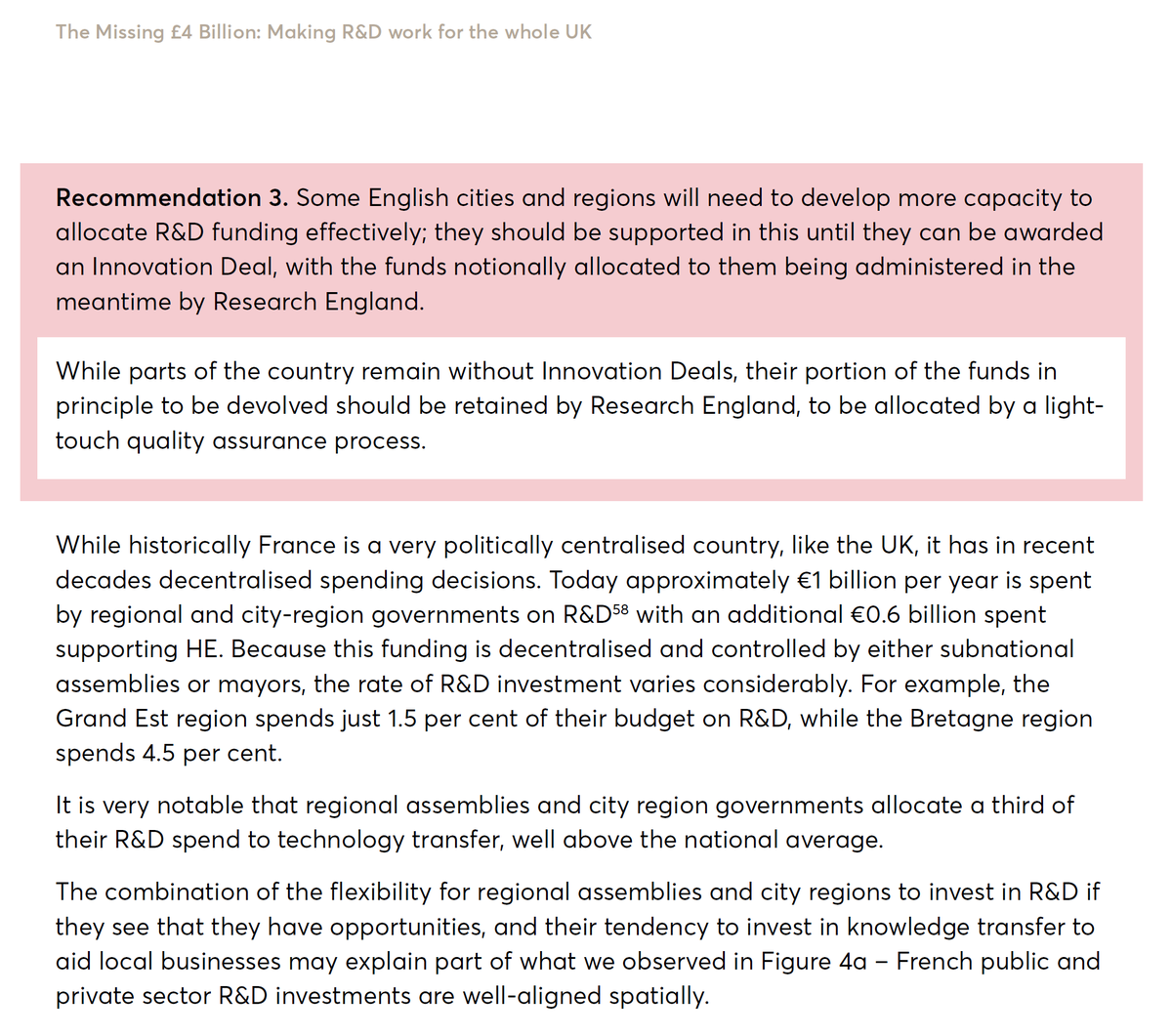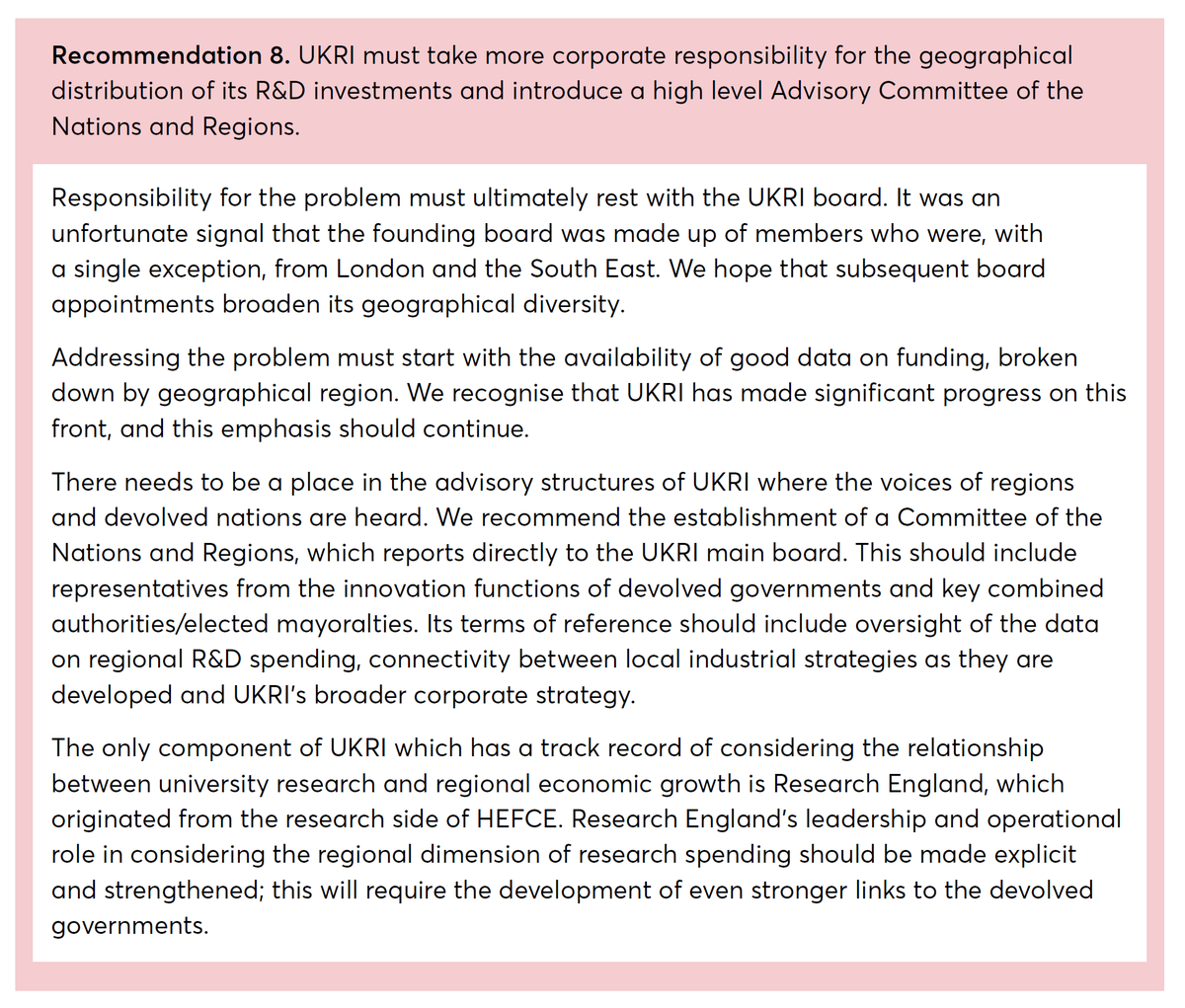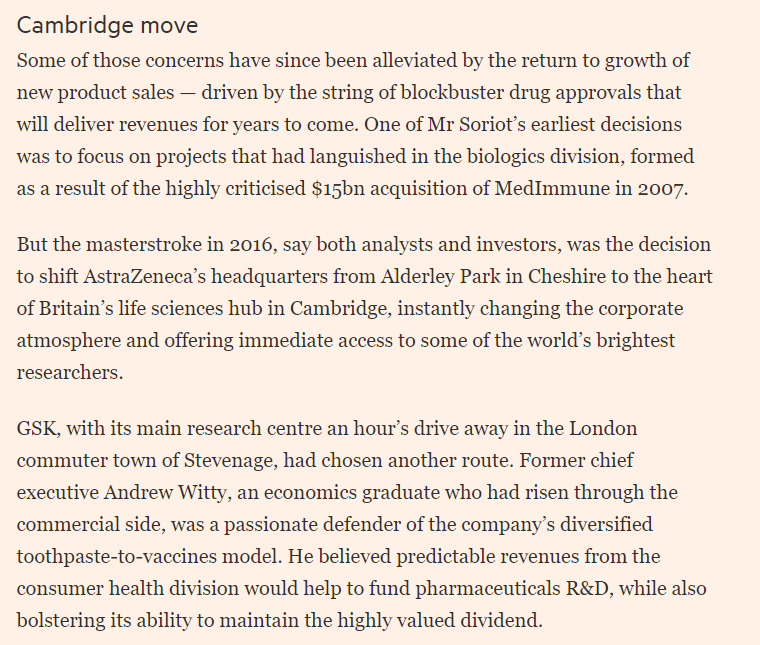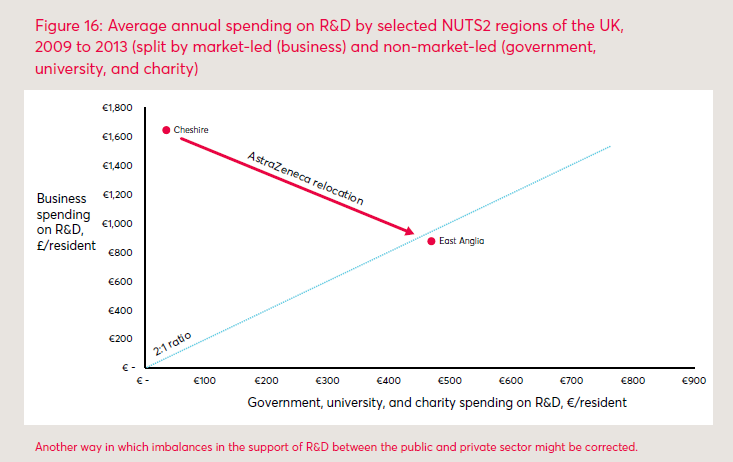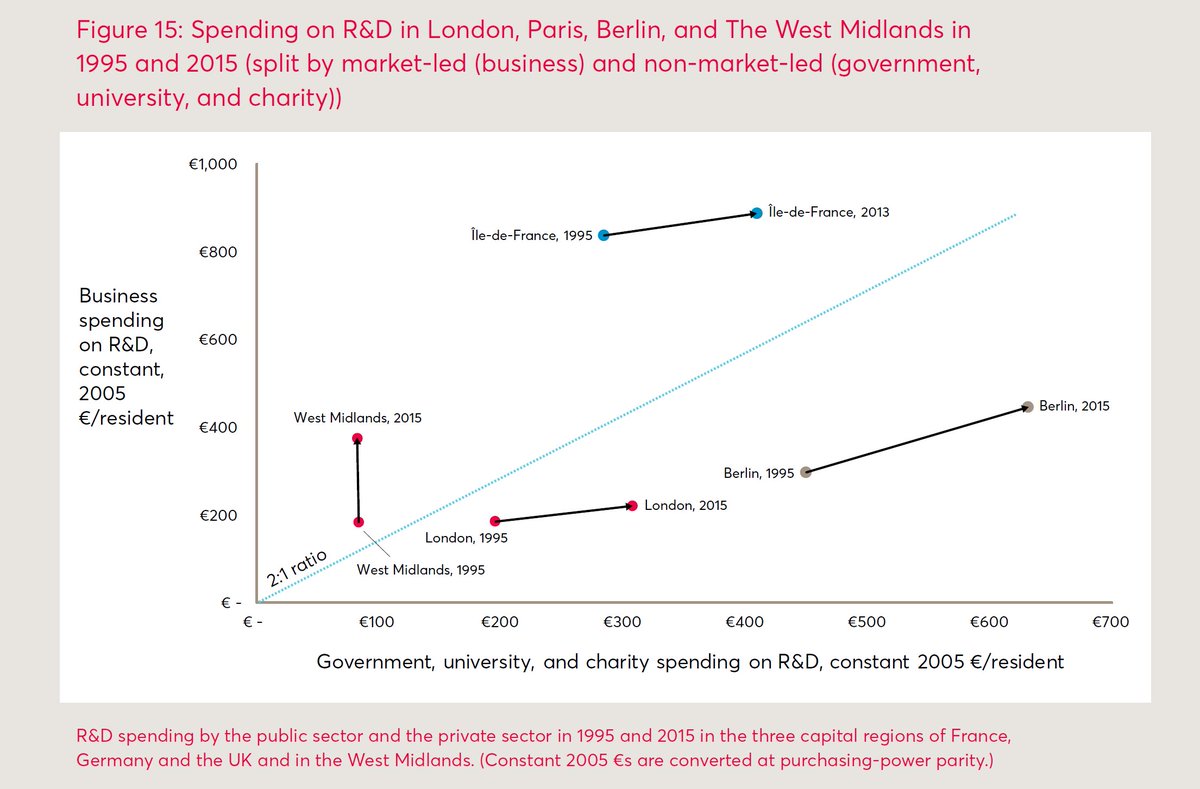As previewed by @FT and now on the @nesta_uk website -- @RichardALJones and I have written a report, and built an interactive web tool, exploring where the UK invests in innovation (specifically R&D) and how we think it could do even better! It& #39;s here. https://www.nesta.org.uk/report/the-missing-4-billion/">https://www.nesta.org.uk/report/th...
My thanks above all to @JJenRae for finding a way to let me find the time to finish exploring more of the datasets and ideas that I& #39;ve been looking at for about seven years. So many dead-ends that didn& #39;t make it into the report. So many past errors corrected.
I& #39;ll tweet the report this morning. Read ahead of me obviously ;). And I& #39;m happy to answer questions. And please do register for the online launch event on 2nd June with good peoples like Nancy Rothwell, @JenWilliamsMEN, @NeilDotObrien, and @liambyrnemp. https://events.nesta.org.uk/missing4billion ">https://events.nesta.org.uk/missing4b...
The two politicians we& #39;ve got on @NeilDotObrien (MP for Harborough, Leicestershire) and @liambyrnemp (Labour Candidate for West Midlands Mayor) are important. Since me and Richard both think that their places deserve the most extra investment. So we can grow the UK economy most.
Before I get into the report... here& #39;s something unusual for many (though typical at @ODILeeds where "kill all reports" is written on the walls)… the core of the paper on which the discussion is based is an algorithm, and that algorithm is on GitHub. https://github.com/thomasforth/designthefuture">https://github.com/thomasfor...
One view of the algorithm is on the @nesta_uk website. Another view of the algorithm is on the @ODILeeds website. But it& #39;s the same algorithm. And much of the report is the output from that. https://www.nesta.org.uk/data-visualisation-and-interactive/design-future/">https://www.nesta.org.uk/data-visu...
So now the report. "The Missing £4 Billion". The title is a fortunate coincidence. "A beautiful result" would be how a mathematician would describe it. https://www.nesta.org.uk/report/the-missing-4-billion/">https://www.nesta.org.uk/report/th...
£4bn is simultaneously,
1/ The extra money UK gov. needs to spend on R&D every year if it is to reach its 2.4% of GDP goal (assuming business adds in £8bn).
2/ The amount it would cost to level up R&D spending in all regions to the level of The Greater South-East and Scotland.
1/ The extra money UK gov. needs to spend on R&D every year if it is to reach its 2.4% of GDP goal (assuming business adds in £8bn).
2/ The amount it would cost to level up R&D spending in all regions to the level of The Greater South-East and Scotland.
Can I just shock you? I don& #39;t think that the UK should spend that £4bn levelling up R&D spending in all regions to the level of The Greater South-East of England. You can see what I think we should do by clicking my name on the interactive tool. https://www.nesta.org.uk/data-visualisation-and-interactive/design-future/">https://www.nesta.org.uk/data-visu...
I write the algorithm, I put in my priorities, and it trolls me by telling me to spend more on R&D in Oxford and Cambridge. #FML.
.
But the algorithm especially says to spend even more extra in places like the Midlands and in Northern Ireland.
.
But the algorithm especially says to spend even more extra in places like the Midlands and in Northern Ireland.
Just a reminder (and I& #39;d suggest sticking to the tool on the Nesta site for today, it& #39;s simpler) that it& #39;s an open source tool, open data, and you& #39;ll get exactly the same answer, but with some extra details (like absolute spending changes that I propose) on the other version.
So what& #39;s in the report?
1/ Introduction.
2/ How does the UK& #39;s level and regional distribution of R&D compare to our competitors.
3/ How did the UK become so odd at doing R&D?
4/ Why our peculiarity is mostly bad, and how we could fix it.
5/ The algorithm.
6/ Recommendations.
1/ Introduction.
2/ How does the UK& #39;s level and regional distribution of R&D compare to our competitors.
3/ How did the UK become so odd at doing R&D?
4/ Why our peculiarity is mostly bad, and how we could fix it.
5/ The algorithm.
6/ Recommendations.
Figure 1. The UK is an innovation economy similar to Italy, Spain, and Czechia. If R&D spending was the English football leagues, we& #39;re in the EFL League 2.
Premiership = Korea, Sweden,...
Championship = Germany, USA,...
League 1 = Belgium, France,...
League 2 = UK, Italy, Spain.
Premiership = Korea, Sweden,...
Championship = Germany, USA,...
League 1 = Belgium, France,...
League 2 = UK, Italy, Spain.
Figure 2: While our competitors have been boosting R&D spending enormously for two decades, we& #39;ve stood still. The UK government& #39;s ambition of getting the UK to spend 2.4% of GDP on R&D is needed. And about a third of the extra money to get there will need to be public money.
But what about within countries? We look at R&D spending by the public and private sector within France, Germany, and UK. The pattern is,
1/ French gov. spending is aligned with business.
2/ Germany gov. spending boosts poor regions.
3/ UK gov. spending boosts... rich regions.
1/ French gov. spending is aligned with business.
2/ Germany gov. spending boosts poor regions.
3/ UK gov. spending boosts... rich regions.
I& #39;m proud to have played a role in creating/popularising this way of looking at R&D data on scatterr plots. Most people like it. Also proud that I& #39;ve helped create something worth the people who don& #39;t like it sending me abuse and calling me a reductive simplistic pompous twit.  https://abs.twimg.com/emoji/v2/... draggable="false" alt="👍" title="Thumbs up" aria-label="Emoji: Thumbs up">
https://abs.twimg.com/emoji/v2/... draggable="false" alt="👍" title="Thumbs up" aria-label="Emoji: Thumbs up">
One thing that me and Richard found throughout doing this work and talking with lots of people is that within the UK,
1/ We have no feel for the sums of money required or involved.
2/ How regions compare internationally on R&D spending.
So we did some international comparisons.
1/ We have no feel for the sums of money required or involved.
2/ How regions compare internationally on R&D spending.
So we did some international comparisons.
Yorkshire, North East, Wales spend less on R&D than the average in Spain or Italy. I think that& #39;s quite important. About the same as Czechia (this is in €/resident, not price-adjusted, not PPP, raw €s).
But the gulf between Northern Ireland and The Republic is what shocked me.
But the gulf between Northern Ireland and The Republic is what shocked me.
Here& #39;s another thing that interested me, looking at UK regions in context,
1/ London is nothing like Paris. Paris businesses spend 4x as much on R&D!
2/ East England is (quite close to being) like the most R&D intensive of Germany. Cambridge is our mini Munich or Frankfurt.
1/ London is nothing like Paris. Paris businesses spend 4x as much on R&D!
2/ East England is (quite close to being) like the most R&D intensive of Germany. Cambridge is our mini Munich or Frankfurt.
3/ UK regions like The West Midlands and North West England are almost unique in Europe. Really high business spending on R&D, but the state is almost completely absent. Similar regions in France and Germany enjoy two to three times the state investment.
Make Leicester a bit more like Lyon!
Make Derby a bit more like Dortmund!
Make Trafford Park a bit more like Toulouse Aerospace Valley!
(within an R&D context)
These are the catchy slogans the nation can unite around.
Make Derby a bit more like Dortmund!
Make Trafford Park a bit more like Toulouse Aerospace Valley!
(within an R&D context)
These are the catchy slogans the nation can unite around.
So, that& #39;s the current situation, there& #39;s more in the report but that& #39;s enough for now. Next section me and @RichardALJones look at how we got here. And over the past year, as I& #39;ve learned more about that, I& #39;ve had some moments of rage, but mostly been "okay, that& #39;s reasonable".
A moment of rage was when I found out that the UK& #39;s system for funding the best research (QR) has a London weighting in it. I couldn& #39;t believe it. Everyone says "yeah QR just funds the excellent research..." and then skip the "plus a little bit extra for London just because" bit.
That shouldn& #39;t happen. It& #39;s ludicrous. Economically illiterate, anti-excellence, garbage. So that& #39;s an easy win. Get rid of London weighting on QR. But there weren& #39;t many of those moment of rage. Mostly the imbalance seems to have accumulated without explicit malice or bias.
For example, @wellcometrust (big thanks to them for publishing their #opendata on @360Giving) basically fund science by region in proportion to the excellence of the relevant science in that region. Perfect. As you& #39;d expect. But there& #39;s a small bias to places that are closer.
That& #39;s not someone at the top going "give it all to Oxford mwahaha". The mechanism is probably a person who made it down to the funding round open shaping meeting from Cambridge while the person in Newcastle didn& #39;t fancy six hours on a train that day. That& #39;s probably most of it.
We look at where Innovate UK spends money. We see the same. An organisation in the South-West and London, and sure enough you& #39;re a bit more likely to win funding if you& #39;re nearby. I claim no bias at all, just the same advantage from proximity as we see everywhere in the economy.
And of course over time any such advantage accumulates. Get a bit more money for innovation? You& #39;re now doing more excellent research and best-placed for even more money. Quite rightly. Proximity is a small advantage, compounded by time into an enormous one.
Which brings us onto the fixes. We can tweak QR a bit, we suggest a number of other tweaks, they& #39;d do good, but they& #39;d not do enough and they wouldn& #39;t fix this proximity problem. So what we need to do is... *puts on a beret*… be a little bit more French.
Decentralise some R&D money! French cities and regions spend about €1.6bn/year on R&D and Unis. Let& #39;s copy that! It doesn& #39;t fully solve the proximity problem, but it helps, and the regions and cities spend much more of their money on applied R&D that helps local business grow.
Other suggestions are home-grown. The UK has a good system for identifying top quality research and assigning money so that we get more of it. Many other countries have nothing as good. So let& #39;s keep that! But just try to get a few people not from London/Oxbridge on the boards.
Last of all, something in our report and close to my hear made even more relevant by an FT piece out today. It& #39;s an excellent long read on how UK/Swedish pharma giant AstraZeneca has thrived, in part because it moved from Cheshire to Cambridge. https://www.ft.com/content/20bd997e-d26a-4cf6-8f2e-3cf35784669e">https://www.ft.com/content/2...
I don& #39;t doubt that AstraZeneca& #39;s move from Cheshire to Cambridge was the right decision and one which led to its current success. It was the right move for the company to thrive, because it gave it access to 14 (fourteen) times the public sector R&D funding in its agglomeration.
Private money will follow public money. Excellent. It should be the goal of most public spending on R&D. AstraZeneca could not have succeeded in the same way if it had stayed here. Because the state is absent. What an opportunity the UK gov. wasted. Let& #39;s learn from it.
ps. There& #39;s a good section on page 46 about how R&D has changed since 1995 in Birmingham, Paris, London, and Berlin and why, realistically, Elon Musk was always going to build a battery factory in Berlin instead of Birmingham. Six times as much public R&D money in Berlin. Easy.

 Read on Twitter
Read on Twitter